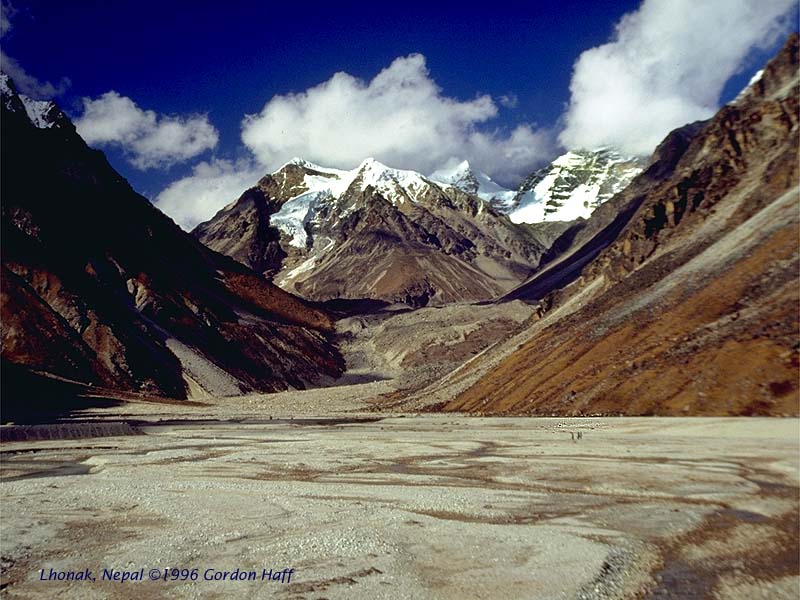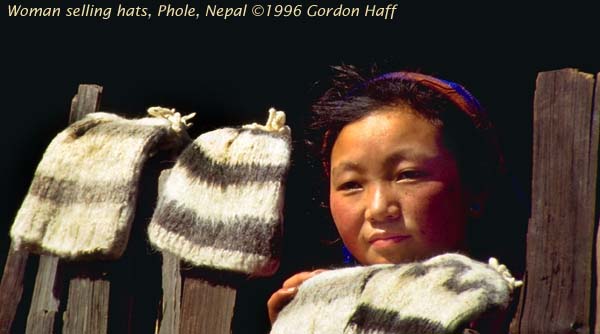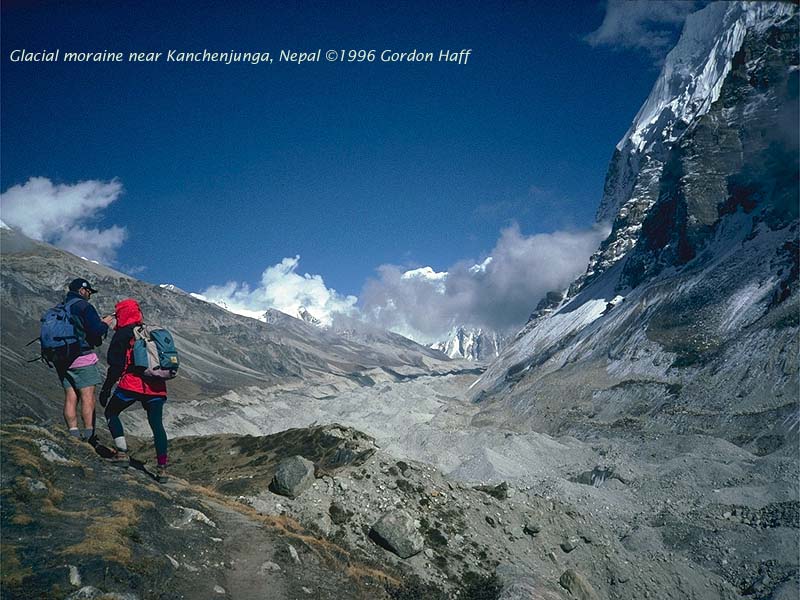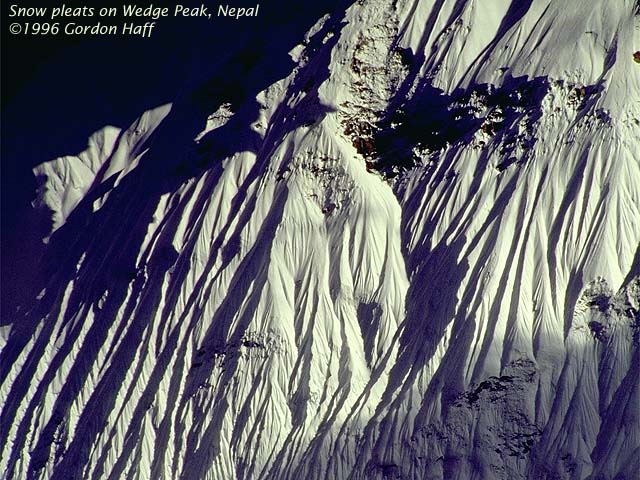 The ampitheatre at Lhonak, 800x600 JPEG, 97K
The ampitheatre at Lhonak, 800x600 JPEG, 97K
 Woman with knitted hats in Phele, 600x334 JPEG, 32K
Woman with knitted hats in Phele, 600x334 JPEG, 32K
Approaching Lhonak introduced ever more spectacular views as we cleared the treeline and traversed above the lateral morraine of the retreated glacier. Each corner opened up new mountainscapes.
It became distinctly chilly though nice enough in the sun. When the wind picked up or cloud cover rolled in, however, you bundled up rapidly. The climbing was generally gradual, however, fortunate since at this elevation steep climbs take a rapid toll on legs and lungs.
 The ampitheatre at Lhonak, 800x600 JPEG, 97K
The ampitheatre at Lhonak, 800x600 JPEG, 97K
The campsite at Lhonak was impressively situated. It stands in a bowl of mountains many of which are snow-capped. It was also delightfully well lit since the walls of the bowl were low where the sun rose and where it set. (By contrast, Ghunsa tended to be dark and cold.) This is not to say that Lhonak was anything but chilly at night (-10 to -15 Celsius).
With the lost flying day and apparently at least one other "peculiarity" relative to the advance itinerary during the trip up the valley, our trek leader Dorjee decided that we would forgo the camping night at PangPema. Instead we would go up to PangPema, the nominal base camp for the north face of Kanchenjunga, as a long day hike. This actually saved two days of what turned out to be an almost impossibly tight schedule since we returned directly to Ghunsa from Lhonak. Schedule aside, Dorjee also had concerns about altitude problems which could result from sleeping (or not sleeping more likely) at PangPema (at something around 17,000 ft.).
 Glacial morraine near Lhonak, 800x600 JPEG, 100K
Glacial morraine near Lhonak, 800x600 JPEG, 100K
We awoke and started early for the walk up to PangPema. Altitude aside, it was not a particularly difficult morning's walk along the glacial morraine. But then that's a big aside as we rose to roughly 5000 meters.
The north face of Kanchenjunga is, of course, spectacular. In some ways, however, the mountain (and the fact that it'd the third highest in the world) is difficult to appreciate because of its sheer bulk. I've read (and it may even be true) that Kanchenjunga is the high point of the second most massive mountain massif in the world. The most massive surprisingly enough is nothing else nearby but rather the interminable mass of glaciers and mountains which include Mt. Logan in Canada. (This is the massif hidden in the clouds from Icy Bay, Alaska photographs from which are elsewhere on these pages.) An interesting counterpoint is the nearby Chang Himal, or Wedge Peak. Looking at the rock gullies and precipitous ridges leading up to this peak, it is hard to conceive of climbing it.
After lunch at the base camp, everyone headed back down at their own pace with the altitude affecting some more than others.

 Himalayan snow pleats on Wedge Peak, 640x480 JPEG, 93K
Himalayan snow pleats on Wedge Peak, 640x480 JPEG, 93K
North face of Kanchenjunga, 640x480 JPEG, 92K